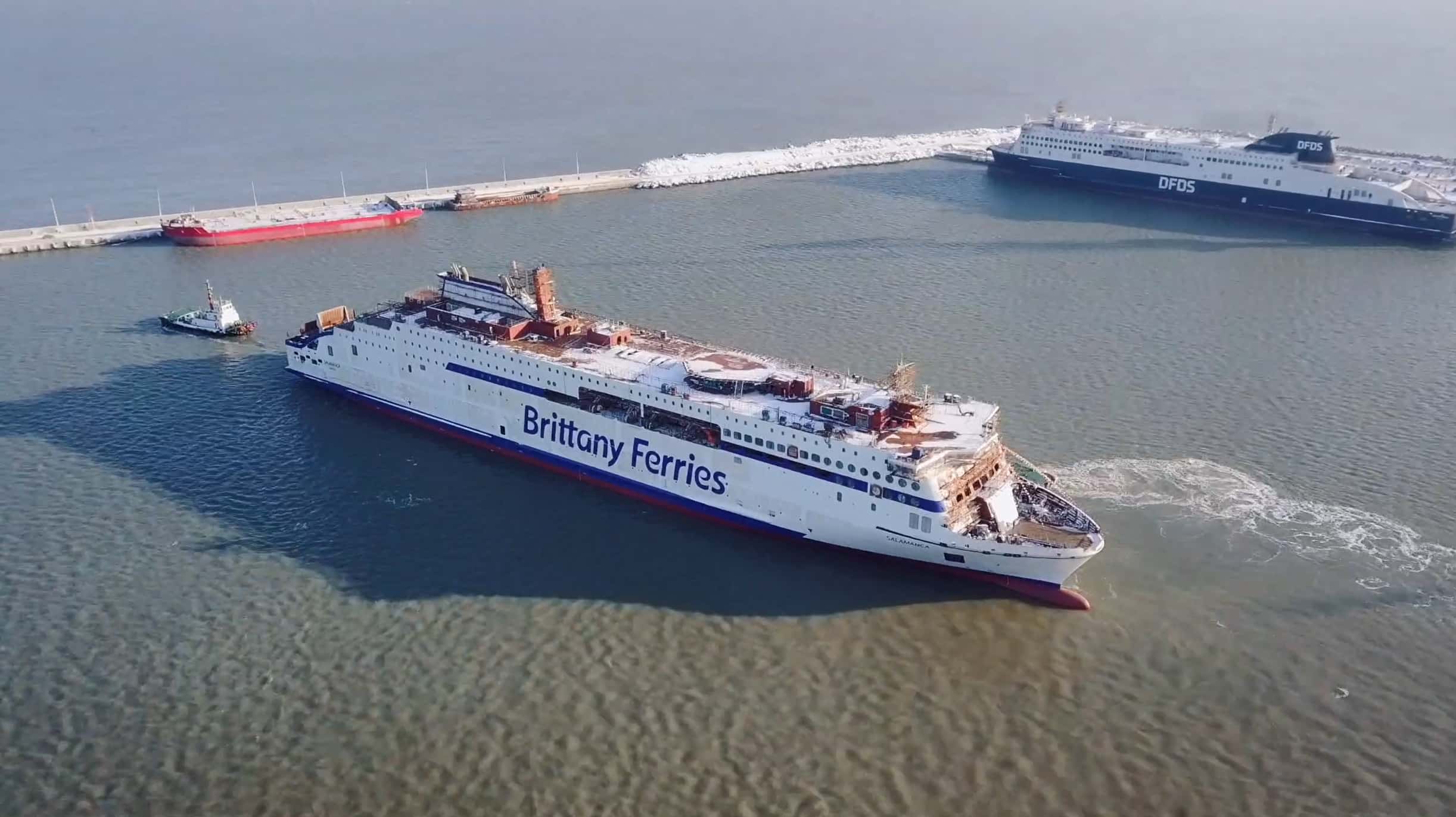
Brittany Ferries’ newest ferry, the Salamanca, took to the water for the first time last week – and is the first of the fleet to be powered by natural gas.
The ship, currently under construction in the Weihei in China, is the second of three E-flexer class ships ordered by Brittany Ferries and will begin service in 2022. The first ship in the class, the Galicia, went into service in December 2020. The third ship, Santoña, will follow in 2023 and will also be powered by LNG. They will join Brittany Ferries’ existing fleet of 12 ships that connect France, Ireland (Cork), the Uk and Spain. Currently, all three ships will service the company’s long-distance routes connecting the UK and Spain.

Fleet renewal is one of the pillars of Brittany Ferries’ five-year recovery plan. The investment in new ships was made well before the pandemic began, but a trio of cleaner, more efficient and comfortable vessels will help secure the company’s future ensuring the continuity of passenger and freight services.
“In spite of Brexit and Covid which have cost our company several hundred million euros already, I am determined on our path towards eco-responsibility and energy transition,” said Jean-Marc Roué, president of Brittany Ferries. “It is a formal commitment I’ve made: we will continue, despite these crises, to reduce our carbon footprint, to keep on improving our fleet and to contribute to the development of the regions we serve. Salamanca is a good illustration of this. By renewing our fleet today, we are ensuring a return to growth tomorrow and Brittany Ferries and our partners remain confident in the future.”
As part of its commitment to greater eco-responsiblity, each E-Flexer vessel promises a significant reduction in air quality and greenhouse gas emissions. There are also smoother, quieter and benefit from less vibration with better sea handling, to the benefit of passengers.
LNG (liquefied natural gas) is a fuel which emits virtually no sulphur dioxide, nitrogen dioxide or particulate emissions, following combustion. In addition, because LNG burns more efficiently than diesel, there is a reduction in carbon dioxide (CO2) output of around 25 percent.
Like her sister, Salamanca will weigh-in at over 42,000 gross tonnes. That means she will be one of the largest ships ever to serve the company, and at 215 metres long she will be joint-longest. She will carry 1,015 passengers, with nearly 3km of lane-space to house passenger and freight vehicles.
She will of course be French-flagged and crewed by dedicated French seafarers.




